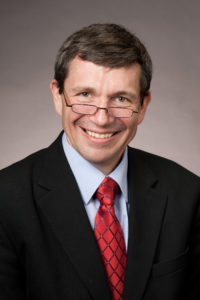Medical history books spotlight important discoveries and innovations in anesthesiology, but many more scientific advances and scientists go unnoticed. A panel discussion titled “Do We Need Another Hero? Anesthesia History Rediscovered” aims to change that with a nod to those important people and milestones that have shaped the specialty to date.

Douglas R. Bacon, M.D., M.A.
Douglas R. Bacon, M.D., M.A., an Anesthesiologist at the University of Mississippi Medical Center in Jackson and the 2012 WLM Laureate in the History of Anesthesiology, and Jane S. Moon, M.D., an Anesthesiologist at the VA Greater Los Angeles Hospital and at UCLA, are among the panelists who will look back at yesterday’s influencers. In her session, Dr. Moon will discuss the role of Arthur Guedel, M.D. in mentoring Emery Rovenstine, M.D. during his lifelong quest to achieve both personal success and the advancement of anesthesiology within the American medical community.
2:45 – 4:45 p.m.
Sunday
W314AB
“Emery Rovenstine and Arthur Guedel were both pioneers of American anesthesiology who grew up in small-town Indiana, were intensely self-motivated and became fiercely devoted to the ‘betterment of anesthesia,’” Dr. Moon said. “Guedel was Rovenstine’s teacher in medical school and would later become a close mentor and friend. The two of them would continue a lively correspondence even after Guedel had settled down in Los Angeles and Rovenstine had moved to New York City (to organize and lead a newly independent department of anesthesiology at Bellevue/NYU). These letters reveal a recurring tension between personal and collective ambition in Rovenstine’s career, giving us a raw glimpse into the incredible drive and discipline that made him so successful.”

Jane S. Moon, M.D.
Dr. Bacon will explore the efforts of Francis Hoffer McMechan, M.D. in defining the specialty of anesthesiology in the first four decades of the 20th century and influencing physicians across the globe to become anesthesiologists. His portion of the session, “The Wheelchair that Went Around the World: F.H. McMechan and the International Specialty of Anesthesiology,” hails Dr. McMechan’s extraordinary accomplishments while struggling with debilitating arthritis and confined to a wheelchair.
Dr. McMechan was a young Ohio physician who limited his practice to anesthesia in 1903. By 1911, he had developed arthritis and could no longer practice clinically. Yet, until his death in 1939, he would define the specialty of anesthesiology through his organizational skills and editorship of Current Researches in Anesthesia & Analgesia. McMechan created a national society, the Associated Anesthetists of the United States and Canada, which had several regional societies. He also structured the International Anesthesia Research Society, which published the journal. Accompanied by his wife Laurette, he traveled the world to help organize the anesthesia community across the globe.
“The importance of McMechan’s trips, taken at great personal sacrifice, was that he helped organize anesthesiologists across the world. Through his personal connection with these physicians, it allowed the open exchange of advice and the sense of community, despite some countries only having three or four specialists,” Dr. Bacon said. “It also demonstrated the power of the anesthetic community in North America, working to collect the money necessary to send Dr. McMechan on the trip despite the onset of the Great Depression.”
Today’s anesthesiologists continue Dr. McMechan’s efforts to define the specialty and create a free exchange of ideas within the profession.
“Our professional societies are constantly redefining what is and is not the practice of anesthesiology. Our journals continue to publish the latest inquiries–both clinical and scientific–and our communications help us bring the need for worldwide safe anesthesia to the forefront,” Dr. Bacon said. “Perhaps there ought to be a well-traveled wheelchair at the base of the ASA’s Lighthouse.”
The panel will discuss a number of other advances, including a look at the science of electricity that found applicability in medicine in the 19th century and ultimately led to the development of defibrillators many years later.
Return to Archive Index